What Is Taro?
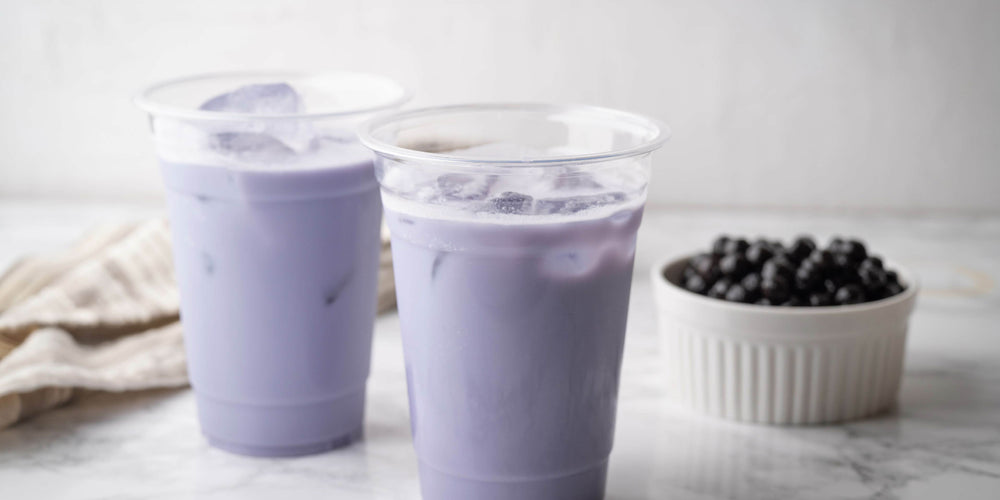
Taro is a starchy root vegetable that is native to Southeast Asia. It is a member of the Araceae family and is known for its unique, earthy flavor. Taro has been cultivated for thousands of years and is a staple food in many Asian cuisines. It is rich in essential nutrients such as fiber, potassium, and vitamin B6. Taro can be cooked in various ways, including boiling, steaming, or frying. It is also used to make delicious beverages like taro milk tea, offering a refreshing and indulgent option for taro lovers.
What Is Taro And Its Origins
Taro is a starchy root vegetable that has its origins in Southeast Asia. It is a member of the Araceae family and has been cultivated for thousands of years. Taro is a staple food in many Asian cuisines, particularly in countries like China, India, and Japan. It is known for its purple or white flesh and earthy flavor. Taro has also gained popularity in Western cultures, where it is used in a variety of dishes and beverages. Its versatility and delicious taste have made it a beloved ingredient in culinary traditions around the world.
Taro As A Popular Ingredient In Beverages
Taro has gained popularity as a versatile and delicious ingredient in beverages. Its unique flavor and creamy texture make it a perfect addition to various drink recipes. Taro is commonly used in bubble tea, smoothies, milkshakes, and even coffee-based drinks. Its natural sweetness adds a delightful taste to these beverages, while its purple or white color gives them an appealing visual appeal. Whether enjoyed hot or cold, taro beverages have become a favorite among food enthusiasts, offering a refreshing and satisfying drink option.
Caffeine Content In Taro Beverages
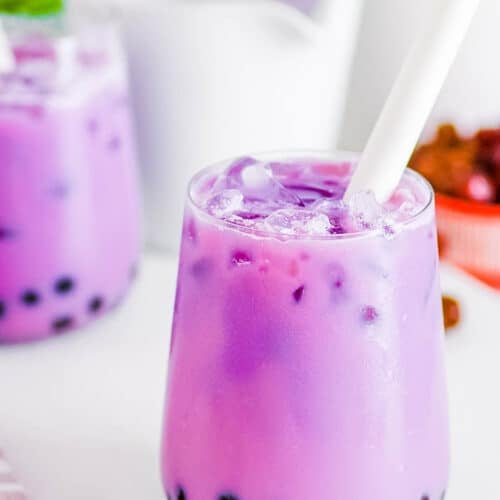
Caffeine content in taro beverages can vary depending on the type of tea used and the brewing method. Taro milk tea recipes that incorporate black tea may have a higher caffeine content compared to those made with green tea or herbal tea. The amount of tea leaves used and the steeping time also play a role in determining the caffeine levels in the beverage. It is important to note that taro itself does not contain caffeine. Therefore, if you are looking for a caffeine-free option, choosing a taro beverage made with caffeine-free tea or opting for taro smoothies or milkshakes can be a great choice.
Understanding Caffeine And Taro
Caffeine is a natural stimulant found in various foods and beverages, such as coffee, tea, and chocolate. It is known for its ability to increase alertness and energy levels. However, it’s important to note that taro itself does not contain caffeine. Taro is a starchy root vegetable that is commonly used in Asian cuisine and has gained popularity in beverages and desserts. While taro-based products like bubble tea or desserts may contain additional ingredients or toppings that contain caffeine, taro itself remains caffeine-free. It’s always recommended to check the ingredients to ensure you’re consuming a caffeine-free taro treat.
Do Taro Beverages Contain Caffeine?
Taro beverages, in their natural form, do not contain caffeine. However, it’s important to keep in mind that some taro-based products, such as bubble tea, may include additional ingredients or toppings that contain caffeine. It’s always recommended to check the ingredients of taro beverages or desserts to ensure that they are caffeine-free. If you’re specifically looking for a caffeine-free option, you can still enjoy the delicious flavors of taro without worrying about the energizing effects of caffeine.
Taro Beverages In Different Cultures

Taro beverages have gained popularity in different cultures around the world. In Asian cuisine, taro is a common ingredient in various drinks, including bubble tea and taro milk tea. These beverages offer a unique and delicious flavor that is enjoyed by many. In Western culture, taro has also made its way into the mainstream, with taro lattes and smoothies becoming trendy choices for those seeking something different. The versatility of taro allows for a wide range of beverage options, catering to different taste preferences and cultural influences.
Taro Beverages In Asian Cuisine
Taro beverages have a long-standing presence in Asian cuisine. In countries like Taiwan and Vietnam, taro is a key ingredient in popular drinks such as bubble tea and taro milk tea. The starchy and subtly sweet flavor of taro pairs perfectly with the creamy texture of milk, creating a refreshing and satisfying beverage. Taro is also used in traditional Chinese desserts like taro balls and taro custard, adding a unique and delicious element to these sweet treats. Its popularity in Asian cuisine demonstrates the versatility and appeal of taro in creating delightful beverages.
Taro Beverages In Western Culture
Taro beverages have gained popularity in Western culture as well. Many cafes and tea shops now offer taro-flavored drinks, catering to the growing demand for unique and exotic flavors. Taro bubble tea and taro lattes have become trendy options for those looking to try something different. The creamy texture and subtle sweetness of taro provide a refreshing twist to traditional beverages. Taro has also made its way into Western dessert menus, with taro ice cream and taro-flavored pastries becoming increasingly popular. The incorporation of taro into Western cuisine showcases its versatility and appeal to a wide range of palates.
Health Benefits Of Taro
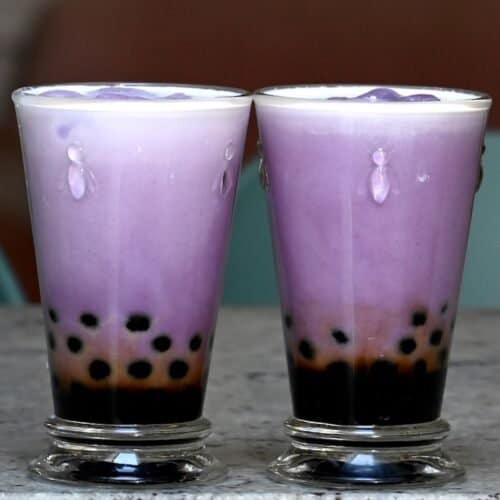
Taro offers several health benefits, making it a nutritious choice for consumption. This starchy root vegetable is rich in dietary fiber, which promotes healthy digestion and can aid in weight management. Taro is also a good source of vitamins and minerals, including vitamin C, vitamin E, potassium, and magnesium. These nutrients contribute to immune function, heart health, and bone strength. Additionally, taro contains antioxidants that help protect cells from damage caused by harmful free radicals. Incorporating taro into your diet, especially through taro beverages, can provide a delicious and beneficial addition to your overall wellness.
Nutritional Value Of Taro
Taro is not only delicious but also highly nutritious. This root vegetable is rich in dietary fiber, which aids in digestion and can help with weight management. Taro is also a good source of vitamins and minerals, including vitamin C, vitamin E, potassium, and magnesium. These nutrients contribute to immune function, heart health, and bone strength. Additionally, taro contains antioxidants that protect cells from damage caused by free radicals. By incorporating taro into your diet, you can enjoy its nutritional benefits and support your overall wellness.
Health Benefits Of Consuming Taro Beverages
Consuming taro beverages can offer several health benefits. Taro is rich in dietary fiber, which aids in digestion and promotes a healthy digestive system. It also contains essential vitamins and minerals like vitamin C and potassium, which support immune function and heart health. Taro beverages are also a good source of antioxidants, which can help protect cells from damage caused by free radicals. Incorporating taro beverages into your diet can contribute to overall wellness and provide a tasty and refreshing alternative to other beverages.
Taro Beverage Varieties
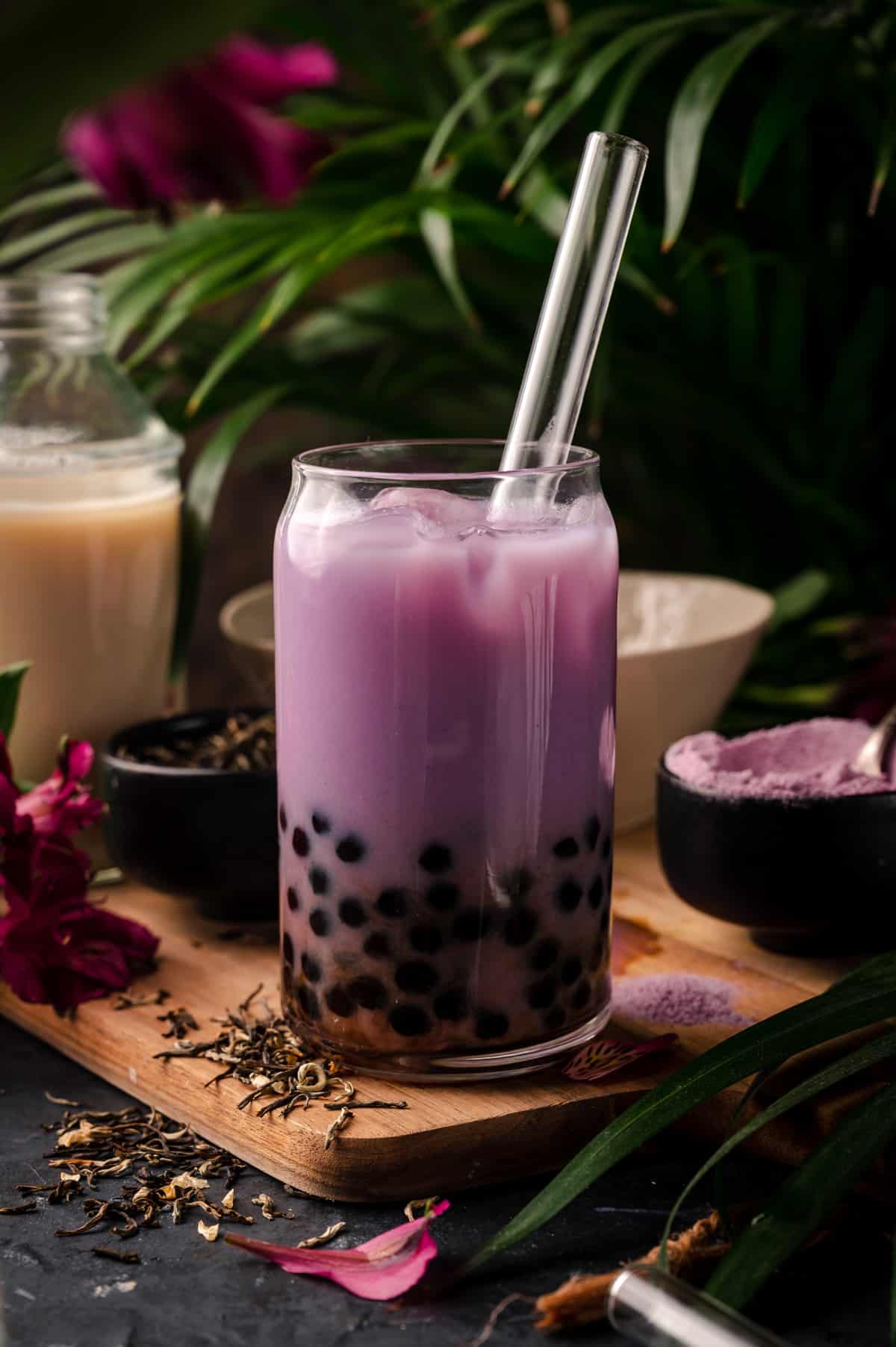
Taro beverages come in various forms, each offering its own unique taste and texture. Some popular taro beverage varieties include:
- Taro Milk Tea: This is a classic taro beverage that combines taro powder or puree with black tea and milk for a creamy and flavorful drink.
- Taro Smoothie: Made with blended taro, milk or yogurt, and sweeteners like honey or syrup, taro smoothies are a refreshing and filling option.
- Taro Latte: Similar to a coffee latte, a taro latte is made by mixing taro powder with steamed milk, creating a comforting and creamy beverage.
- Taro Bubble Tea: Bubble tea, also known as boba tea, can be made with taro flavoring, adding a unique twist to this popular drink with its chewy tapioca pearls.
These variations allow people to enjoy the rich and distinct taste of taro in different ways.
Different Types Of Taro Beverages
There are various types of taro beverages that cater to different tastes and preferences. Some popular options include taro milk tea, taro smoothies, taro lattes, and taro bubble tea. Taro milk tea combines taro powder or puree with black tea and milk for a creamy and flavorful drink. Taro smoothies are made by blending taro with milk or yogurt and sweeteners like honey or syrup, resulting in a refreshing and filling beverage. Taro lattes, similar to coffee lattes, are made by mixing taro powder with steamed milk for a comforting and creamy drink. Lastly, taro bubble tea adds a unique twist to the popular drink with its chewy tapioca pearls. These various variations allow individuals to enjoy the rich and distinct taste of taro in different ways.
Popular Taro Beverage Recipes And Variations
There are numerous ways to enjoy taro in beverage form, each with its own unique twist and flavor profile. Here are some popular taro beverage recipes and variations:
- Taro Bubble Tea: This is a classic taro drink that combines taro powder or puree with black tea, milk, and chewy tapioca pearls. It’s both delightful and satisfying.
- Taro Smoothie: A refreshing option, taro smoothies blend taro with milk or yogurt, ice, and a sweetener of your choice. You can also add fruits like banana or mango for added flavor.
- Taro Latte: Perfect for coffee enthusiasts, a taro latte mixes taro powder with steamed milk and a touch of sweetness. It provides a comforting and creamy alternative to traditional coffee drinks.
- Taro Frappe: For a frozen treat, try a taro frappe. Blend taro with ice, milk or coconut water, and sugar or syrup for a delightful and icy beverage.
These variations allow you to customize your taro beverage to your preference, whether you prefer a creamy texture, a fruity twist, or a refreshing frozen drink. So go ahead and get creative with your taro concoctions!
Conclusion
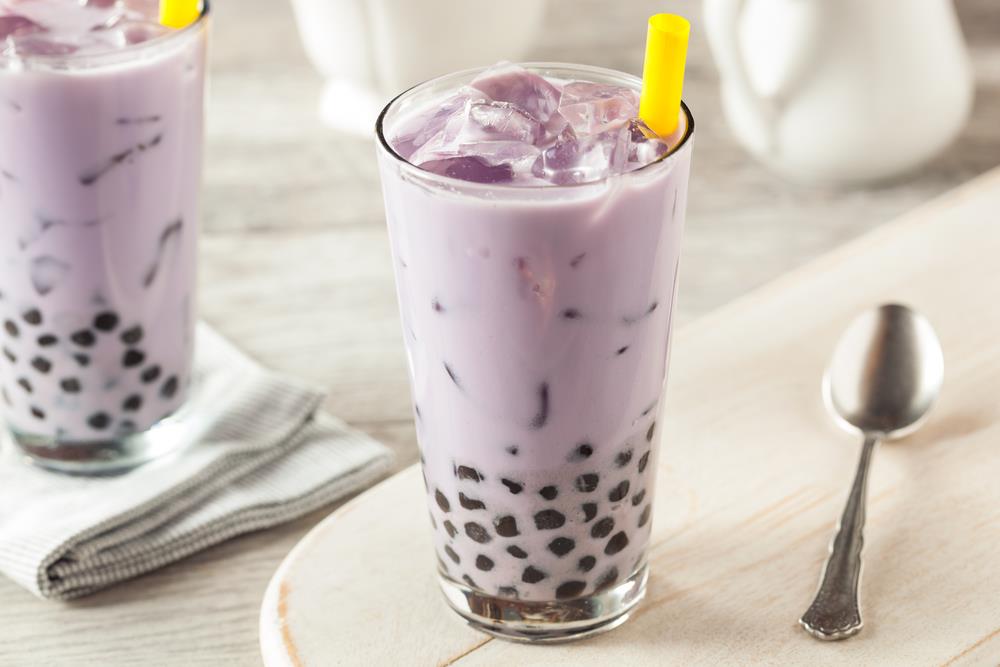
In conclusion, taro is a versatile and beloved ingredient in beverages, known for its unique flavor and creamy texture. While taro does not naturally contain caffeine, it offers a great alternative for those seeking a caffeine-free option. Taro-based drinks, such as bubble tea, smoothies, lattes, and frappes, provide a delicious and satisfying experience without the energizing effects of caffeine. Whether you enjoy taro in traditional Asian beverages or explore its variations in Western culture, taro is sure to delight your taste buds and offer a refreshing beverage option. So go ahead and indulge in the wonders of taro without worrying about caffeine content.
Summary Of Taro Beverages And Caffeine Content
Taro beverages offer a delightful and caffeine-free alternative for those looking for a flavorful and refreshing drink. While taro itself does not contain caffeine, it’s important to be cautious of additives or toppings that may contain caffeine, such as in bubble tea or desserts. When enjoying taro-based drinks, it is recommended to read the labels or ask the establishment about the ingredients to ensure a caffeine-free experience. Taro’s popularity in both Asian and Western cultures is a testament to its versatility and delicious taste. Indulge in the wonders of taro without worrying about caffeine content.
Exploring The Versatility And Popularity Of Taro Drinks
Taro drinks have gained immense popularity in recent years, thanks to their unique flavor and versatility. From taro bubble tea to taro smoothies and lattes, there are countless ways to enjoy this delicious root vegetable in a beverage form. Taro’s creamy texture and slightly sweet taste make it a perfect base ingredient for a wide range of drinks. Its popularity is not limited to any specific cuisine or culture. Taro beverages can be found in Asian restaurants, cafes, and even in Western coffee shops. Whether you prefer it hot or cold, taro drinks offer a delightful and refreshing experience for all taste buds.
FAQ About Does Taro Have Caffeine: Understanding Taro Beverages
Q: What is taro?
A: Taro is a root vegetable commonly used in Asian cuisine for its unique flavor and texture.
Q: Do taro beverages contain caffeine?
A: Taro itself does not contain caffeine. However, some taro beverages like taro milk tea or taro latte may contain added ingredients like black tea or coffee that do contain caffeine.
Q: Are there caffeine-free taro beverage options available?
A: Yes, there are caffeine-free taro beverage options available. You can opt for taro smoothies, taro milkshakes, or other taro-based drinks that do not contain caffeine.
Q: Can taro beverages be enjoyed hot or cold?
A: Yes, taro beverages can be enjoyed hot or cold depending on personal preference. Taro can be used to make hot taro lattes or cold taro bubble tea, offering versatile options for consumption.
Q: Is taro a healthy choice for a beverage?
A: Taro is naturally low in fat and calories, making it a healthier option compared to some other sweetened beverages. However, added sugars or syrups in taro beverages can impact their overall nutritional value.
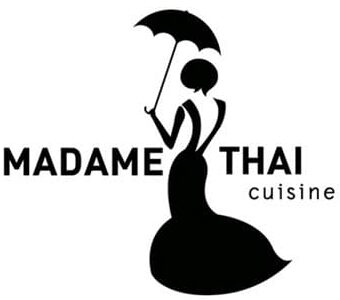
Madame Thai Cuisine is not just a restaurant; it’s a culinary journey through Thailand’s vibrant and diverse flavors. Our story began with a passion for sharing the authentic tastes of Thailand with the world. Situated in the heart of [location], Madame Thai Cuisine has been a beacon of Thai culinary excellence since [year of establishment]. Our commitment to using only the finest and freshest ingredients, combined with traditional cooking techniques, has earned us a reputation as a go-to destination for exquisite Thai dining.